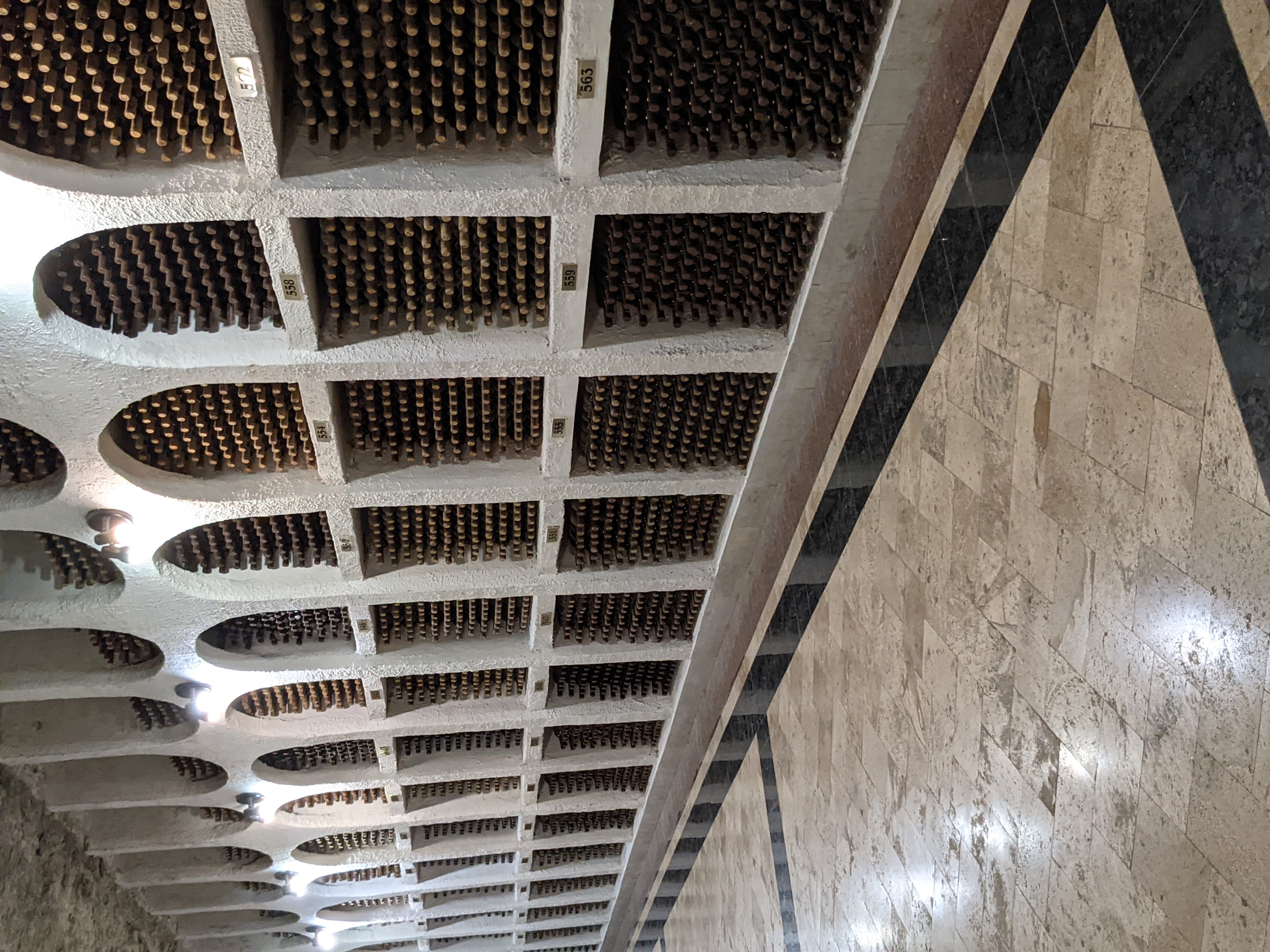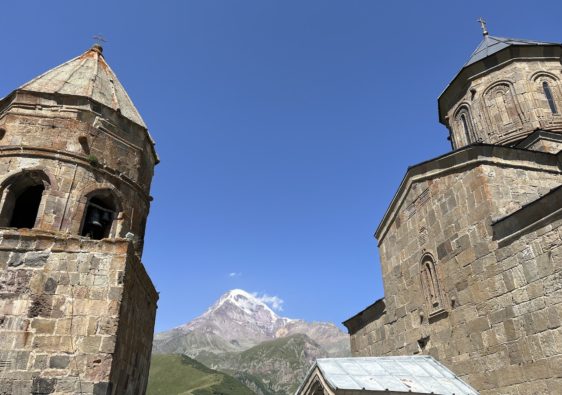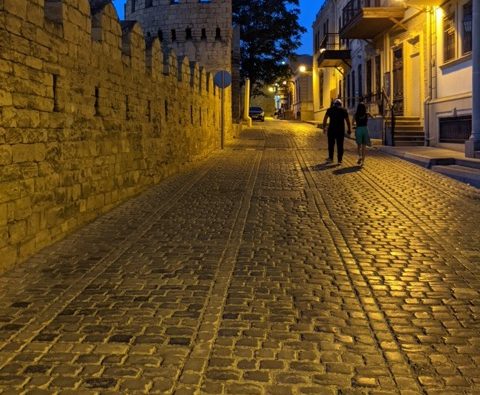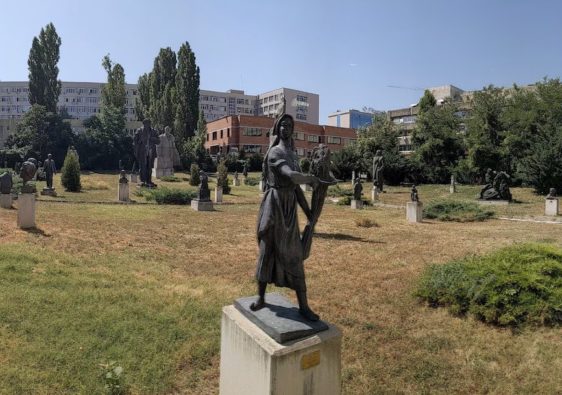All we really knew about Armenia was that Armenia and Azerbaijan did not get along, and we had to proceed to Armenia via Georgia. I found a 2-day tour into Armenia from Georgia which seemed like an ideal way to see some of the key sites in Armenia including Yerevan – and having a guide the whole time seemed like the perfect way to travel. Our tour guide – Irakli – was Georgian, but had done this trip into Armenia many times and made it his job to speak to locals and understand the Armenian perspective. He was an excellent guide – and we highly recommend the tour. https://www.tripadvisor.com/AttractionProductReview-g294195-d13181292-Best_of_Armenia_2_days_tour_to_Yerevan_Sevan_lake_and_more-Tbilisi.html
Three churches. We stopped at three churches in Armenia en route to Yerevan. A few things of note: both Georgia and Armenia say they’re the first Christian countries in the world, and both take pride in their churches and their history. Armenia did not require us to cover our heads upon entering their churches [Georgia did]. And whereas in Georgia the Soviets defaced many of the churches, covering the walls with white and hiding the beautiful paintings and frescoes beneath, the churches we saw in Armenia had retained their ancient art. It made them look older, darker, and very unique.


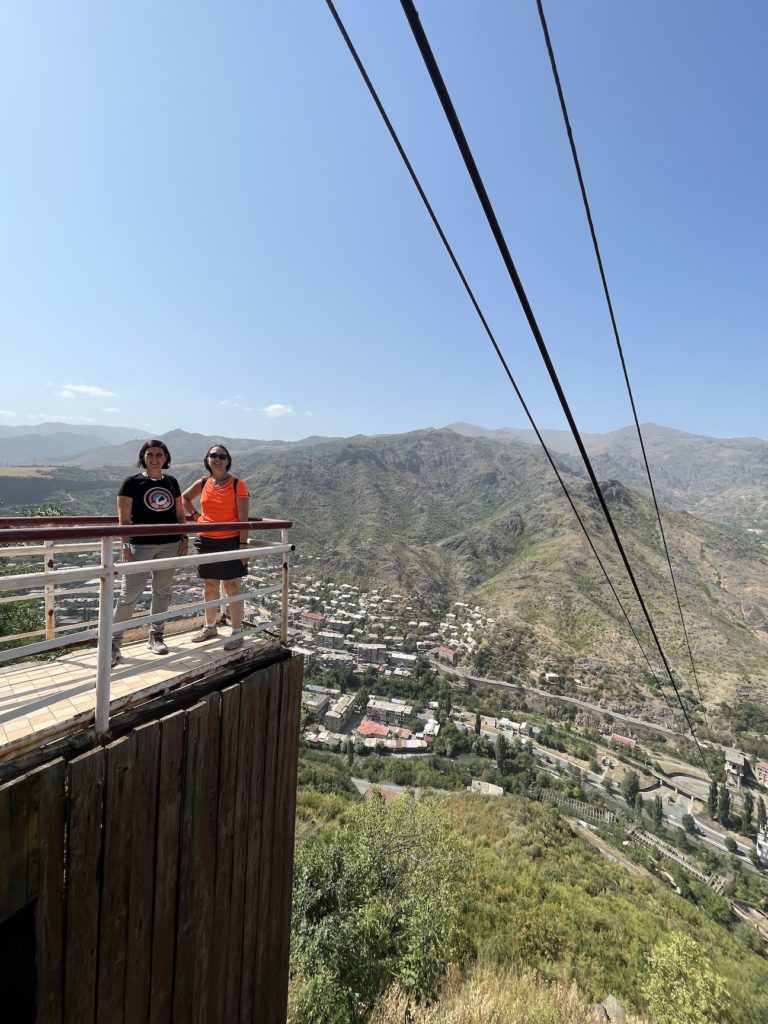
We stopped at a defunct cable car tower overlooking a valley. The valley and the view were beautiful – but it was graffiti-covered and had not run for years. Apparently there had been factories built and the area’s economics were on the rise, but the owners moved away, the industry dried up and the hope dried up along with it. The cable car tower was in a residential neighborhood with houses hiding behind fences made of old car parts and concrete apartment buildings that didn’t look like they’d been touched since the Soviet era. The whole area looked like it could be still in the USSR, circa 1950 – and it was disconcerting.
Armenia is in a precarious position politically and economically. They are tucked between Turkey on the West and Azerbaijan on the East. During the Ottoman period, during 1915 – 1917 Armenians say there was a genocide of 800,000 – 1.2M Armenians, which Turkey doesn’t acknowledge. And Armenia is at war with Azerbaijan in the East. Azerbaijani is a Turkish language and Turkey and Azerbaijan are very close allies and “brother” countries. Iran is to the South and despite religious and cultural differences they have a cordial relationship. And Georgia is to the North, but Georgia can only do so much for Armenia. Because of its limited options for alliances, Armenia is still the most tightly connected with Russia and parts of it still feel like it is still living in the Soviet-era.
Yerevan. We were afraid that all of Armenia felt like the Soviet-era, until we got to … Yerevan! We arrived at our hotel in Yerevan at around dinner time – and our guide gave us a few recommendations, dropped us off, and said he’d pick us up the next day. We had booked at the Armenia Marriott Hotel Yerevan [on points!] which was not included in our tour costs, and which was right in the Republic Square. The whole square was teeming with people – and everyone seemed to be dressed up. We were hungry so went to the recommended restaurants and felt decidedly under-dressed in our travel-worn clothes, but the worst thing is that all of the restaurants were booked solid. One after the other turned us away. It was a Monday night! I kept thinking … Yerevan? A city I’d never even heard of prior to planning this trip and it was so alive and vibrant. There was a singing fountain dancing to music that hundreds of people were crowding around, and there were tourists and vendors selling balloons and trinkets. I’m not sure what I imagined, but it wasn’t this! We finally went back to the hotel and ate at the hotel’s cafe simply because we could get a seat – and they had outdoor tables that overlooked Republic Square.


The next day, Irakli drove us through Yerevan, taking us first to a new church. The church was beautiful, but it was new and the walls were white, and it paled in comparison to the old, dark churches we’d wandered through the day before.
Then we went to an artisan market – I didn’t buy anything but now wish I’d bought something showing the Armenian alphabet – which is unique and not related to any other alphabet [same is true of Georgian alphabet, and no, they’re not related.]
After the market, we went to Cafesjian Sculpture Garden and Center for the Arts. The sculpture garden had several pieces that I thought were amazing – including a lion made from old tires, and a horse made entirely from old horseshoes. Then behind the sculpture garden is a series of steps that is several stories high – and is the Cafesjian Center for the Arts. There are escalators to take you all the way up [thankfully we had a guide, or we would probably have walked all the way up and then realized there was an escalator and taken it back down]. You can see the exhibits and the amazing view as you walk back down [or you can take the escalators back down too].


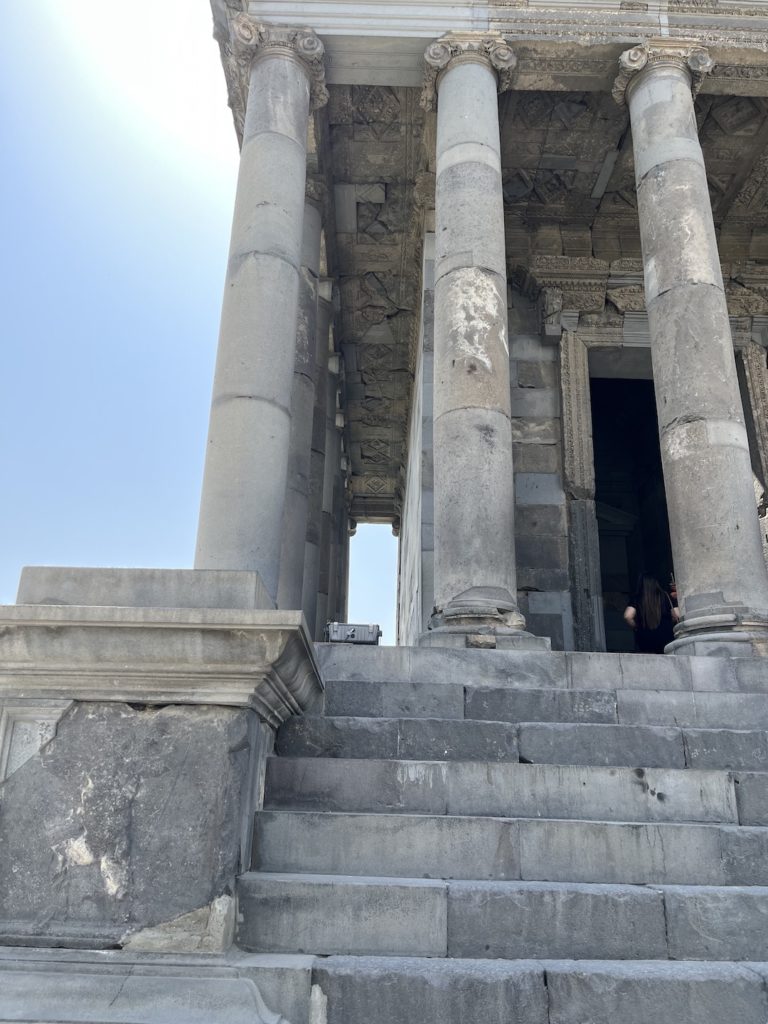
Garni. After the sculpture garden, we left Yerevan and headed to ancient Roman ruins at Garni – a UNESCO site. According to wikipedia: “It is the only standing Greco-Roman colonnaded building in Armenia and the former Soviet Union.” It was beautiful in a stark, spartan way, and dates back to the 1st century AD. The temple collapsed in a 1679 earthquake and was restored in the 1970’s. The valley surrounding Garni was almost as impressive as the ruins themselves, including cliff faces we wondered if my rock-climbing husband would be able to scale.
Mt. Ararat is a symbol of Armenia and pictures of it are everywhere and many businesses include Ararat in their names, but we never saw Mt. Ararat. First of all, Mt Ararat is in Turkey, and while I’ve heard that you can see it on a clear day from Armenia, that never happened for us – the air was heavy with pollution. We had actually booked a half-day tour to Mt. Ararat and were considering only doing half of our two-day tour and staying an extra day to see it …but since we had booked a private tour with our guide and since we really liked him, the logistics of staying and figuring how to get back to Tbilisi from Yerevan didn’t seem worth it.
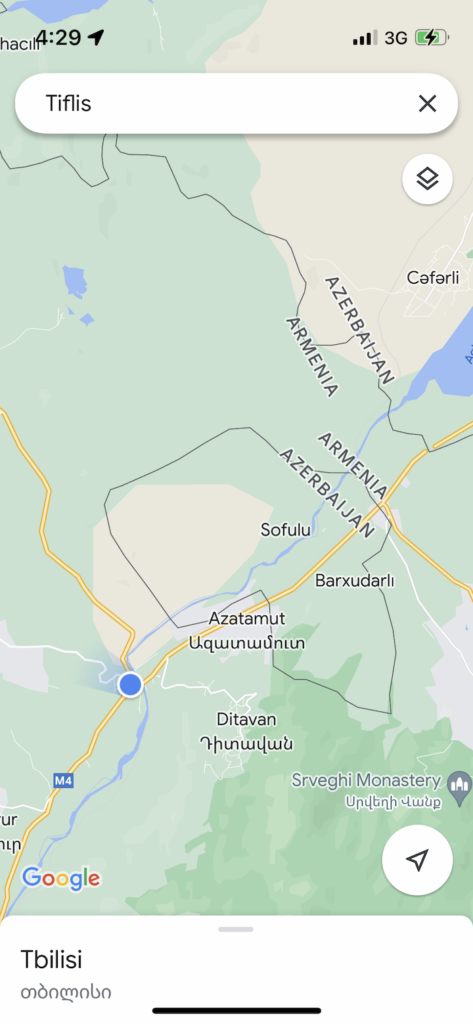
Criss-crossing through Armenia and Azerbaijan. On our way back to Georgia, we were watching the maps as we drove, and the reality of the conflict between Azerbaijan and Armenia became more present. As we drove, our GPS dot on the map bobbed in and out of Azerbaijan as the border on the map didn’t follow the road [if you believe Google maps]. There were small circles of Azerbaijan territory wholly encircled by Armenia, and the reverse as well. I asked the guide who the people living in Azerbaijan territory encircled by Armenia – who did they pay taxes to? Were they governed by Armenian law? Or Azerbaijani? The roads were empty and the country was pretty desolate, so despite my initial fears of bobbing and weaving between the two “enemy” countries, there was no issue for us.
